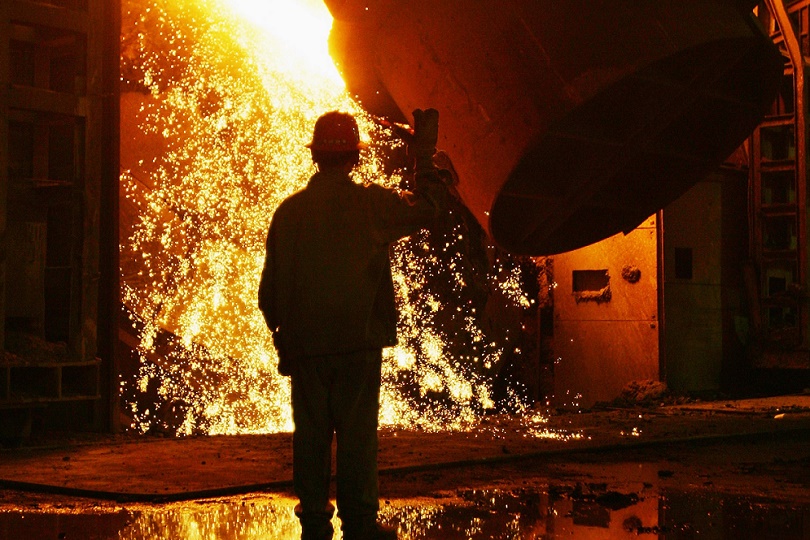Why Australia's steel industry deserves to survive
The longer term problem is that Whyalla would appear to be locked into the commodity steel business. No matter what the improvements in work practices, rail infrastructure and anti-dumping provisions, it should have been recognised that this is a strategy with no prospects.
According to most commentators , Arrium should have been re-positioning its business model as part of a planned transition out of raw steel making at Whyalla. Yet Arrium remained committed to business as usual. In February the company reported in relation to its steel division:
A strong lift in earnings in difficult external conditions, though Whyalla had an operating loss of A$43 million for the period, together with cost reductions, productivity improvements and lower raw material costs.

Steelmaking has a future in Australia, but only with new business models and technologies. Arrium, if it survives its administration, must develop “smart specialisation” strategies that meet the demands for steel products in growth industries in Australia and internationally.
The first thing to recognise is that steelmaking is a global business, and Australia is a bit player. However, it is an important component of our advanced manufacturing capability, and the transition to a more diversified, high value adding post-mining boom economy.
Over 60% of steel production takes place in China, India, Taiwan and South Korea. Many of these global businesses produce far more than the combined output of Australia’s steelmakers, creating substantial excess capacity. These countries also manufacture what could be referred to as “commodity steel” – steel that is mass produced for use in areas such as construction, infrastructure and shipbuilding.
Mass production can generate economies with lower costs of producing and lower prices. As global businesses have got bigger, Australian producers have found it difficult to compete in this market, though there are some important research collaborations between Australian universities and the large global steelmakers.
Smaller businesses in the steel production industry, like most areas of manufacturing, must shift focus from commodities to a technology intensive and digital strategy. This approach is no longer just to keep costs down but to increase quality, design and innovation. It places an emphasis on what consumers want.
These businesses are developing smart specialisation strategies that embrace the use of knowledge and technology to enhance production, performance and the embedded value of manufactured products, as well as re-configuring business processes and transforming the way business is done. Bluescope has achieved considerable international success through its Colorbond© product range. Areas of current and potential competitive advantage for steel include advanced manufacturing, defence, renewables and medical technologies.
Arrium is both a miner and a steelmaker. It would appear from its February Report for the first half of 2016 that its immediate problem is on the mining side, due in large part to the decline in iron ore prices. By contrast, the outlook for the steel division was painted in a very positive light. It was only the Whyalla operation that was reported as dragging the business down.
A forecast of domestic demand increasing by 5% per annum over the period 2015-16 to 2017-18, with a solid pipeline of new construction projects, particularly high rise residential and public infrastructure.
A significant number of favourable anti-dumping decisions covering reinforcing bar from China, rod in coil from China, reinforcing bar from Korea, Singapore, Taiwan and Spain, with further applications being considered.
Clearly, the banks were not impressed by this optimistic market outlook with an unchanged business model, and they may have viewed the losses in the mining business as simply overwhelming. Is this another case, like Dick Smith, where the banks moved early in an endeavour to secure their assets? Or perhaps they lost their patience?
But it might also be the case that Arrium has been prevented from investing in the modernisation and transformation of its steelmaking business by the short-term attitudes of shareholders and institutional investors. There would seem to have been little appetite for investing in steel growth areas and value chains, compared with the iron ore play , and a shortage of necessary skills and capabilities.
Around the world, businesses are transforming and specialising in niche markets and products where there is high demand. Sweden, for example, is only a small steel producer but has built a global reputation in high quality specialist steel products, including tool steel, high speed steel, ball bearing steel and carbon steel.
It is important to recognise that many Australian steels are world class, which allows a broad range of steels to be used in fabrication work. There are also benefits to be realised by combining structural steels with high strength concrete. Australia leads the world in the production and utilisation of cold formed steel, steel decking and coated steels.
Public policy has a part to play in facilitating this transition for the steel industry through the development of management and innovation capability, opportunities for research collaboration and local participation in large infrastructure projects.
The Government’s National Innovation and Science Agenda is not supposed to be just about startups but industrial transformation. Steelmaking, like manufacturing generally, should not be written off. It is critical to Australia’s technology and knowledge-based future.